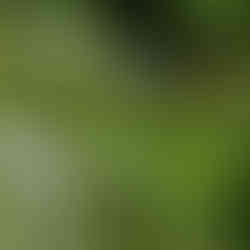Creating a Hummingbird-Friendly Garden: Spring Flower Fueling Stations
- Nuts for Natives
- Feb 28, 2024
- 3 min read
It's not too late to bump up your supply for hummingbirds.

I don't know about you but at the end of every growing season I have a mental list of things I want to do for the following year's garden. Inevitably, I leave some, or sometimes, many of those undone! On my list after last year was to make sure I had plenty of plants to provide nectar for hummingbirds in April. I had read about scientific thought that the bloom time of native flowers up the east coast evolved over eons to coordinate with the return of ruby-throated hummingbirds as they make their way north.
Fast forward, a few weeks ago I listened to a post by Bona Terra founder Jeremy Tidd about why planting in winter works really well. Jeremy explained since plants are dormant, moving or planting them now doesn't disturb them and once conditions arrive that prompt the plant to emerge from dormancy, that plant will already be in its spot - ready to go!

Which got me to thinking about the hummingbirds that will arrive in April or so looking for nectar to fuel. Red flowers are always a favorite so cue the Eastern columbine (Aquilegia canadensis) and trumpet honeysuckle (Lonicera sempervirens). Apparently hummingbirds are also fans of the Virginia bluebell (Mertensia virginica). These three plants are iconic signs of spring in the native garden and favorites!

I was curious as to whether it's possible to find these now and plant in time for the hummingbirds in spring. Checking nurseries specializing in natives that have on-line inventories, it is possible.
Eastern Columbine
Eastern Columbine is a small perennial with dainty foliage that sends up 2 to 3 foot stalks of incredibly intricate red and yellow flowers in spring. These flowers en masse are stunning. Eastern columbines thrive in moist soils though will grow in drier conditions in part shade or part sun. If the area is moist, the foliage will last through the summer. Eastern columbines are short lived perennials but will self sow. The reason they are in short supply in my garden is likely because I am leaving quite a layer of leaf litter which does make it a bit tougher for plants to self sow as seeds need to reach the soil. If you want plants to self sow, you may want to clear some ground when plants go to seed.
Current Availability:
Plant More Natives (mail order)
Trumpet Honeysuckle
An easy to grow native vine, trumpet honeysuckle grows in part shade to full sun. For more information, please check out this post.
Current Availability:
Herring Run Nursery (orders can be placed on March 14th)
Plant More Natives (mail order)
Virginia Bluebells
A spring ephemeral, Virginia bluebells emerge in early spring, flower and then die back in May only to reappear the following year. For more information about growing bluebells, go here.
Current Availability:
Plant More Natives (mail order)
No guarantees your newly planted plants will bloom by April but your fueling stations will be topped off for the next spring! It probably goes without saying, but if you are going to a nursery for a particular plant, please call ahead as inventories constantly change.
Do you have other spring blooming plants visited by hummingbirds or other places where plants are available? Please share in the comments. Thank you.
Happy fueling.

































Comments